The French Quarter or Vieux Carré (Old Quarter) forms the heart of New Orleans. This is where New Orleans was founded in 1718 and where you find many of the city’s historic buildings.
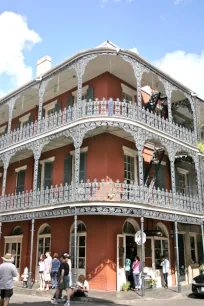
The French Quarter is the oldest part of New Orleans. The original twenty blocks that formed the fledgling city of New Orleans were laid out in 1721 around the Place d’Armes, now Jackson Square.
Most of the houses in the French Quarter were built before Louisiana was sold to the United States in 1803. The area has been surprisingly well preserved, and as a result it is full of historic buildings designed in Creole and Spanish style with beautiful laced balconies and shuttered windows.
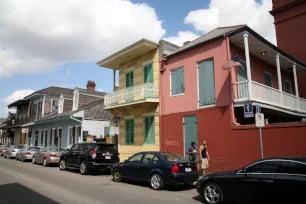
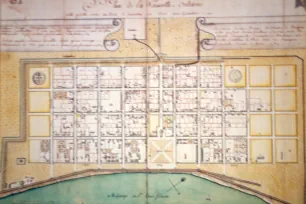
Thanks to its compact size and low car traffic (there are no parking lots) it’s best to explore the French Quarter on foot.
History
In 1718 Jean Baptiste Le Moyne founded a new French settlement near the Mississippi River, at the time known as Nouvelle-Orléans (New Orleans). Three years later he ordered engineer Adrien de Paugier to lay out a street pattern for Nouvelle-Orléans which resulted in the compact street grid of the French Quarter.
After struggling initially, the settlement started to thrive by the mid 1750s thanks to its position at the Mississippi River. The settlers built Creole style houses and the city resembled a Caribbean seaside town.
After the Spanish took control over the city in the 1760s, the local architecture became influenced by Spanish colonial architecture, as evidenced by new buildings that were erected such as the Cabildo and the St. Louis Cathedral.
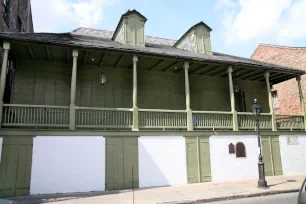
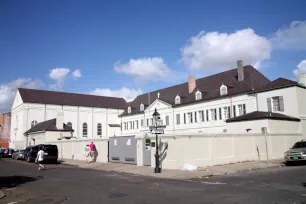
Despite the Great fire of 1788 and another one in 1794 during which more than 80% of the existing buildings were destroyed, the city continued to grow. After the purchase of Louisiana in 1803 by the United States – which more than doubled the size of the US – Americans started to settle in New Orleans, but most of them chose to live outside the Vieux Carré, which allowed the historic center to keep its distinct Creole character.
After the Civil War, which marks the end of New Orleans’s Golden Era, the French Quarter started to decline as wealthy Francophones moved out. During the 1920s the unique character of the French Quarter started to attract the interest of writers and artists and calls were made for the preservation of the old quarter. For this purpose, a special committee was created, the Vieux Carré Commission. It successfully fended off a proposal by Robert Moses to build a highway straight through the old quarter, an idea that was finally shelved in the 1960s. The commission continues to protect the character of the French Quarter, which is now a protected Historic Landmark District.
Compared to the rest of New Orleans, the French Quarter escaped from Hurricane Katrina and the subsequent flooding relatively unscathed, mainly thanks to its elevated location.
Sights
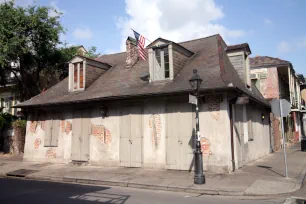
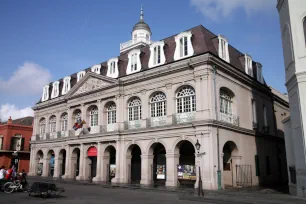
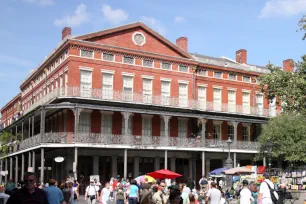
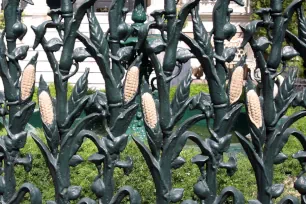
The oldest buildings
Despite its name, you won’t find many French buildings in the French Quarter. As a result of the Great Fires at the end of the eighteenth century, most of the original French buildings were reduced to rubble. Some however escaped the fire, such as the Old Ursuline Convent, the oldest building in the Mississippi Valley, built between 1745 and 1750.
Spanish Colonial architecture
Many of the most notable buildings in the French Quarter were built under Spanish rule, when the St. Louis Cathedral, the Cabildo (town hall), the Presbytere and the Pontalba buildings were erected around Jackson Square. The St. Louis Cathedral, a favorite with photographers, was later renovated; a classical front was added, and tall spires replaced the domed towers. A better example of colonial Spanish architecture are the two buildings that flank the cathedral on either side, the Cabildo and Presbytere, whose ground floors are still original. Another famous Spanish colonial building is the Napoleon House, now one of the city’s most popular bars.
Ironwork
From a later era are the Pontalba buildings, bordering Jackson Square. The graceful red brick buildings sport beautiful cast iron balconies, an architectural element that has almost become synonymous with the French Quarter. This sort of ornamentation became very popular in New Orleans and as a result many of the buildings in the French Quarter have fences or balconies decorated with ironwork.
They often have elaborate designs with all kind of motifs ranging from abstract to leafs, fruits, and cherubs. Originally, wrought iron was used, which was hand made by artisans. Cast iron was a more industrial form of ironwork, where each piece was identical. Royal Street is a good start if you want to admire some of the most beautiful ironwork in the French Quarter. At no. 915 is one of the city’s most famous ironwork fences: the so-called Cornstalk fence, where corn is used as a decorative motif.
Bourbon and Royal Street
From the same era is Lafitte’s Blacksmith, now the oldest bar in New Orleans. It is said that the pirate brothers Jean and Pierre Lafitte used the blacksmith as a front for their smuggling activities. Another historic building is Madame John’s Legacy, built in 1789 and the oldest surviving residence in New Orleans. It was built in the style of a Creole Plantation House, with a raised veranda.
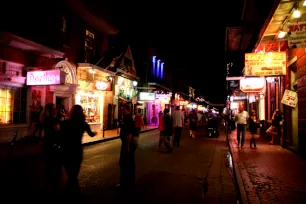
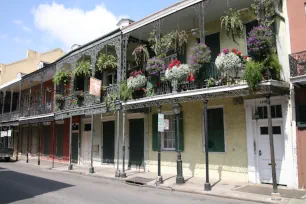
The most famous street in the French Quarter is undoubtedly Bourbon Street, named for the Bourbon dynasty which ruled over France. The street is known for its many bars and lively, even rowdy atmosphere, especially at night when it is lit with neon lights and during the Mardi Gras festival, when the street is one large party zone. Many of the bars and nightclubs here have live music and shows.
Another popular street in the French Quarter is Royal Street, where you’ll find some of the quarter’s most beautiful houses, often with balconies decorated with plants and flowers. The most famous – and most photographed – is probably the LaBranche House, at the corner of St. Peter Street. Some of the area’s best shops and restaurants can be found here. Also on Royal Street is the Supreme Court Building, which with its monumental white granite facade seems out of place here.
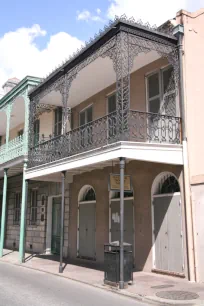
Downriver
Most people stick to the center of the French Quarter, but it is recommended to walk all the way east, downriver towards Esplanade Avenue, where you’ll find many more delightful buildings. Since relatively few tourists come here, this part of the French Quarter is a lot more peaceful.
Some of the most interesting buildings in this area include the Gallier House – a beautiful 19th-century residence which is now a museum, the 18th-century Old Ursuline convent, and the Old US Mint, where coins were minted until 1909.
